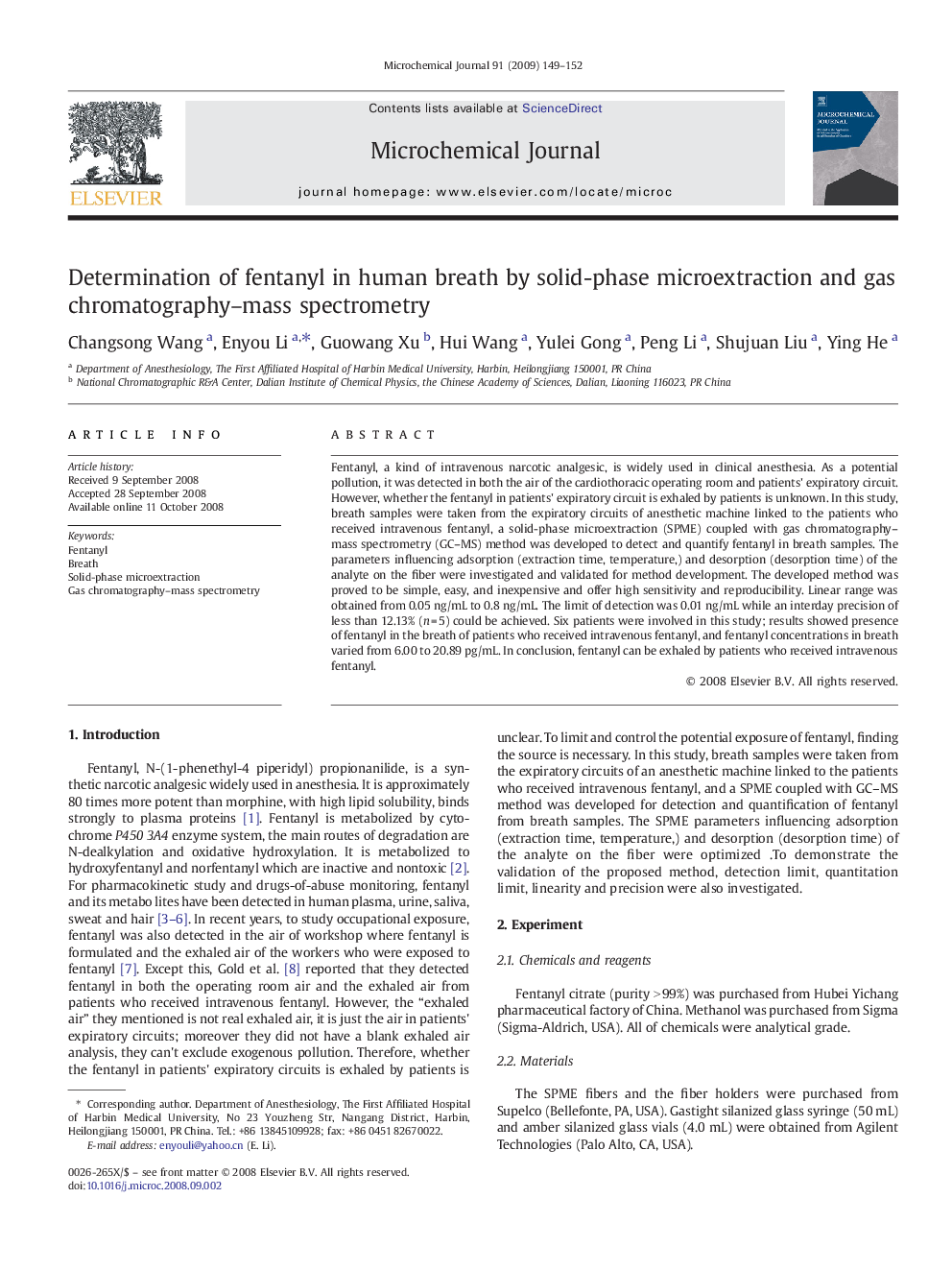| Article ID | Journal | Published Year | Pages | File Type |
|---|---|---|---|---|
| 1228152 | Microchemical Journal | 2009 | 4 Pages |
Fentanyl, a kind of intravenous narcotic analgesic, is widely used in clinical anesthesia. As a potential pollution, it was detected in both the air of the cardiothoracic operating room and patients' expiratory circuit. However, whether the fentanyl in patients' expiratory circuit is exhaled by patients is unknown. In this study, breath samples were taken from the expiratory circuits of anesthetic machine linked to the patients who received intravenous fentanyl, a solid-phase microextraction (SPME) coupled with gas chromatography–mass spectrometry (GC–MS) method was developed to detect and quantify fentanyl in breath samples. The parameters influencing adsorption (extraction time, temperature,) and desorption (desorption time) of the analyte on the fiber were investigated and validated for method development. The developed method was proved to be simple, easy, and inexpensive and offer high sensitivity and reproducibility. Linear range was obtained from 0.05 ng/mL to 0.8 ng/mL. The limit of detection was 0.01 ng/mL while an interday precision of less than 12.13% (n = 5) could be achieved. Six patients were involved in this study; results showed presence of fentanyl in the breath of patients who received intravenous fentanyl, and fentanyl concentrations in breath varied from 6.00 to 20.89 pg/mL. In conclusion, fentanyl can be exhaled by patients who received intravenous fentanyl.
